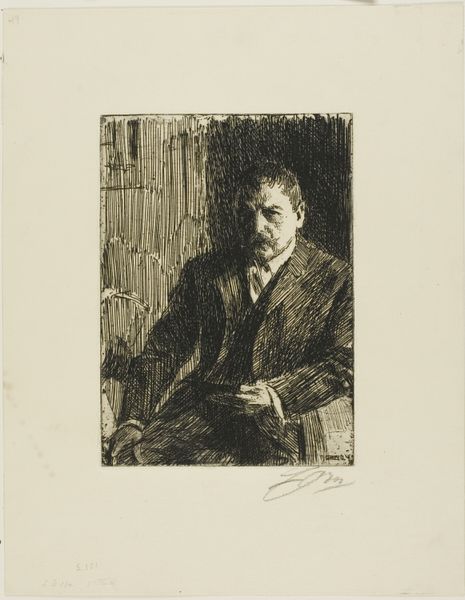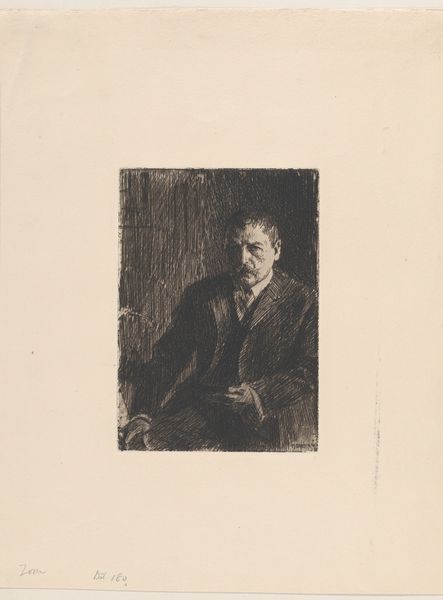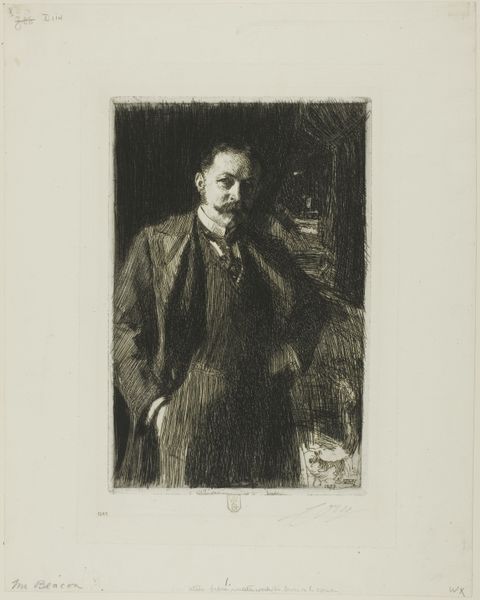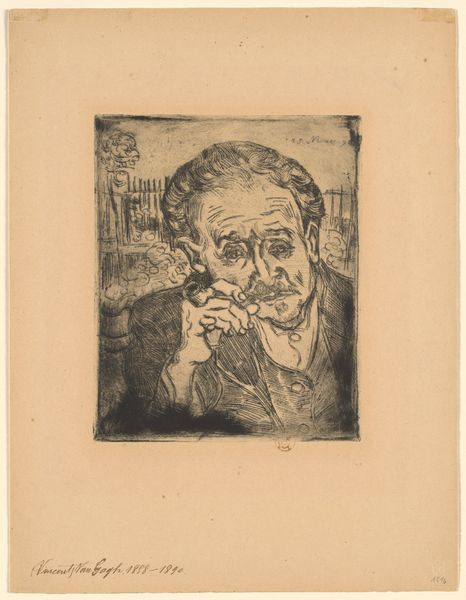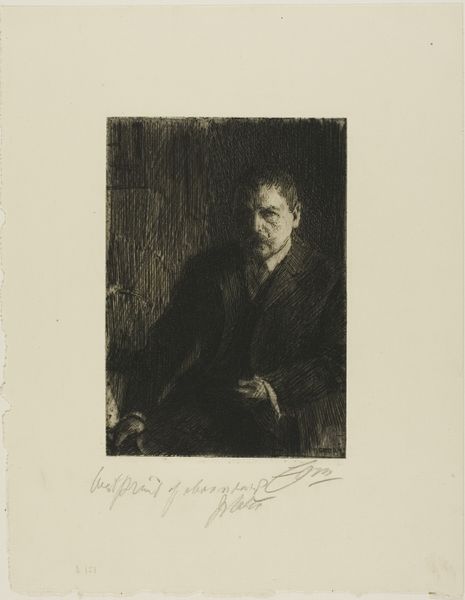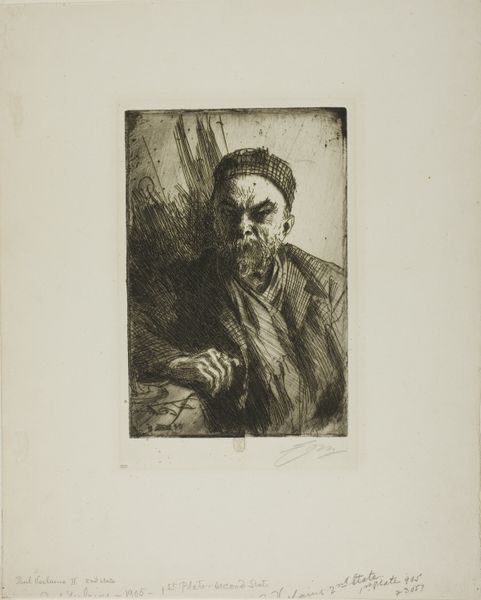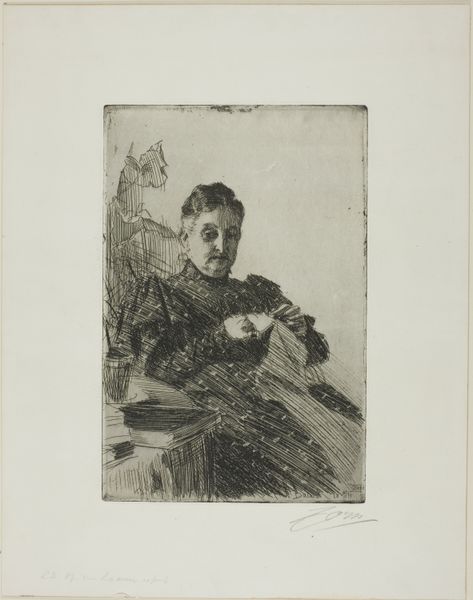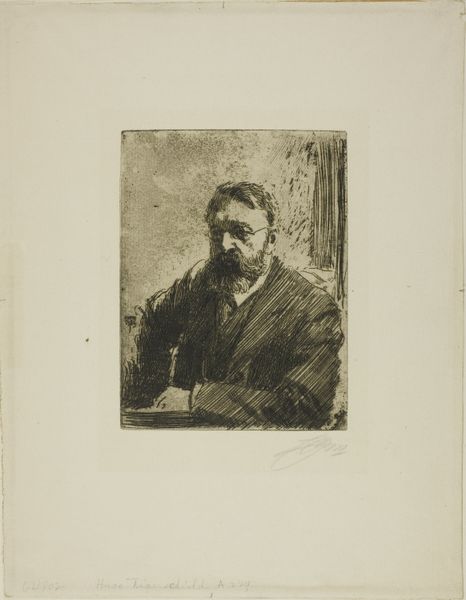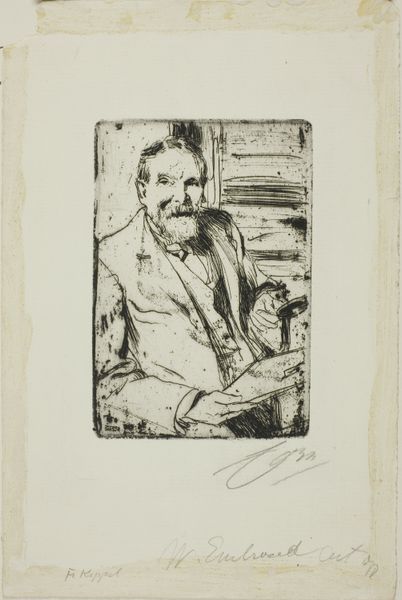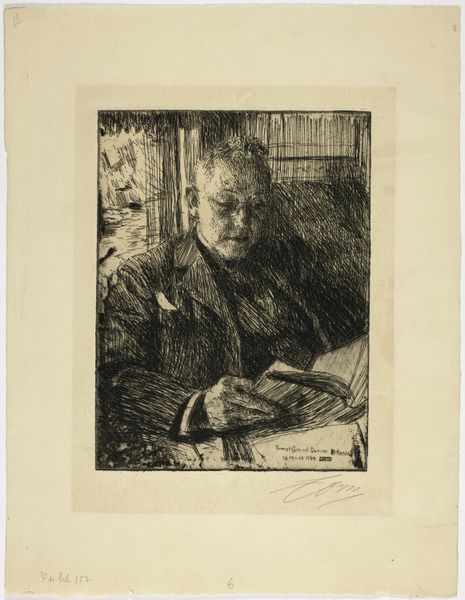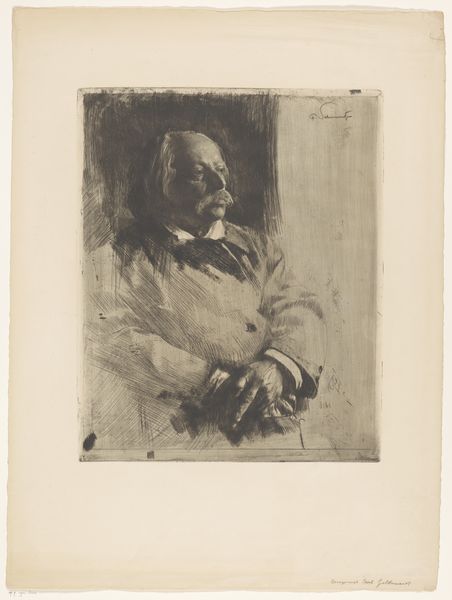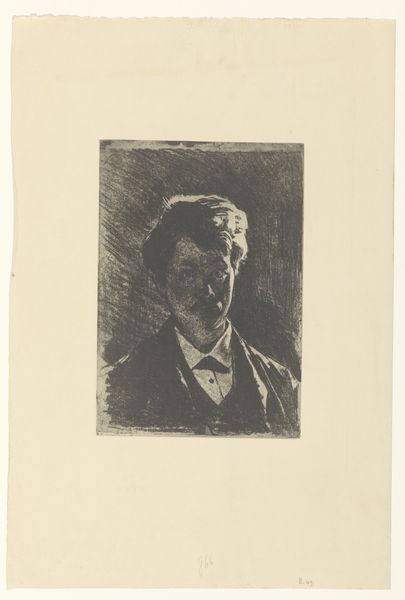
drawing, print, etching, paper
#
portrait
#
drawing
#
self-portrait
# print
#
etching
#
old engraving style
#
paper
#
realism
Dimensions: 175 × 125 mm (image/plate); 279 × 228 mm (sheet)
Copyright: Public Domain
Curator: Before us is Anders Zorn's "Self-Portrait 1904 II", an etching printed on paper currently residing here at the Art Institute of Chicago. What are your initial thoughts? Editor: My first impression is one of introspection. It feels like a candid moment, yet meticulously crafted. The textures seem so tactile, almost like I could feel the wool of his suit just by looking at it. Curator: Precisely. The etching process itself, a form of printmaking, is central to understanding Zorn's broader output, reflecting his keen attention to the tools and labor involved in art production. Editor: Agreed, but also what does his careful choice to represent himself tell us about masculinity and self-regard at the time? Zorn presenting himself as successful, urbane--how does that intersect with the era’s ideals and the art market’s demands for the artist’s own image? Curator: Zorn's etchings gained significant commercial success. His skilled draftsmanship certainly catered to the burgeoning middle class, fascinated by portraits of artists who seemed to epitomize modern life, as if mass production democratized portraiture itself. He's both a craftsman and a shrewd businessman. Editor: The shadows, the hatching… you can practically trace the steps Zorn took, making it less about "genius" and more about the skillful manipulation of materials. This speaks volumes about challenging established high art versus craft dichotomies. Curator: A valid point. Further, while celebrated, were there critiques of Zorn's work back then tied to social perceptions about him and his wealthy clients, given his status within Swedish society? And how do class politics inform even a self-portrait? Editor: It encourages a richer reading than simple art-historical hero worship. Recognizing labor, material, and their social entanglements reframes both our perspective of Zorn's life and his body of work. Curator: Considering how Zorn's mastery was perceived, alongside a more grounded evaluation, provides a powerful way for viewers today to relate to his art on more equitable footing, connecting craft to both artistry and cultural context. Editor: Absolutely, by engaging in a close reading of materials and by looking beyond aesthetics, we reveal how material processes, too, speak volumes within historical frameworks.
Comments
No comments
Be the first to comment and join the conversation on the ultimate creative platform.
